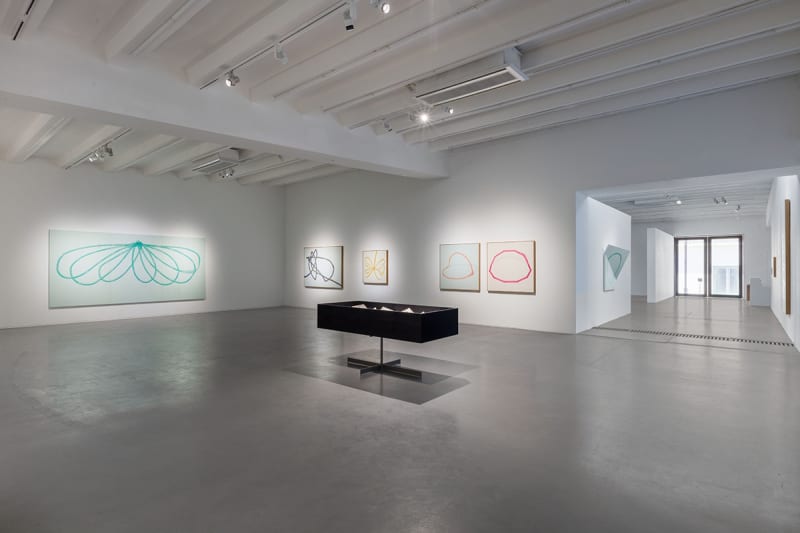As artists born in the 1970s, Hang Chunhui and Wu Didi share similar academic backgrounds, undergoing years of theoretical study and creative practice to develop a visual expression that combines both traditional and contemporary elements. Hang Chunhui’s artistic creation within the realm of traditional painting seeks new possibilities for conceptual exploration. Gradually dismantling the narrative aspects of painting, he constructs a creative thread. Through the interchange between “objects” and “forms” he attempts to discover new concepts for painting and space. He progressively abandons the realistic language of meticulous brushwork, exploring the modern transformation of meticulous painting in terms of media, perception, and artistic concepts. Wu Didi’s creative themes often originate from traditional humanistic contexts, focusing on flowers, birds, bamboo, and vines. However, she simultaneously transcends tradition in terms of meaning. While these subjects hold stable values and meanings in tradition, Wu Didi, in extending their spiritual externalization, explicitly expresses the abstraction inherent in them within his compositions. This imparts a broader range of expressive possibilities, conveying new visual experiences and prompting viewers to shift their reflections from the general traditional literati values to contemplation of modern-day circumstances. Both artists, starting from tradition within the same cultural framework, expand the presentation trajectory of contemporary Chinese painting.
The exhibition “Silence Within Silence – Wu Didi Solo Exhibition” presents Wu Didi’s five series of works: “Bamboo”, “Vines”, “Moss Rock”, “Dreamland” and “Geometric Landscape” Wu Didi’s works reveal the complex relationships and existential meanings between individuals and the world from various perspectives. Her artistic practice investigates the understanding of existence through individual perceptual awareness, revealing visual truths beyond the scope of mere observation. Titled “Silence Within Silence” this exhibition reflects Wu Didi’s continuous return to the essence and homeland of life from nature. In a modern world where nature has gradually been commodified and objectified since the industrial revolution, she contemplates human survival and circumstances, embracing the tranquility within silence.

